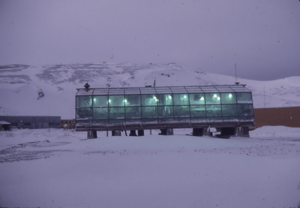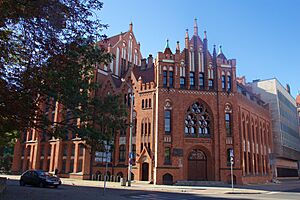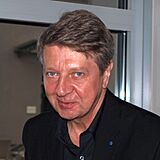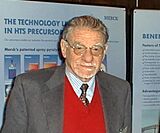Polish Academy of Sciences facts for kids
 |
|
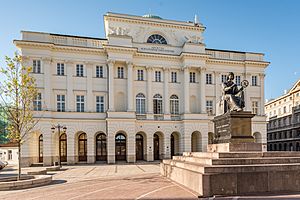
Staszic Palace, the seat of PAN, and Copernicus Monument
|
|
| Abbreviation | PAN |
|---|---|
| Formation | 30 October 1951 |
| Type |
|
| Headquarters | Warsaw |
|
Region served
|
Poland |
|
President
|
Marek Konarzewski |
|
Formerly called
|
Warsaw Scientific Society Warsaw Society of Friends of Learning |
The Polish Academy of Sciences (called PAN for short) is a special organization in Poland. It helps science grow and develop across the country. It's like a big club for very smart scientists and has many research centers. PAN is based in Warsaw, the capital city of Poland. It was started in 1951, after World War II.
Contents
History of PAN
The Polish Academy of Sciences was created by combining older science groups. Two important groups that joined were the Polish Academy of Learning from Kraków and the Warsaw Society of Friends of Learning. This second group was very old, started in the late 1700s.
PAN works in a few ways. First, it's a group of top scientists who are chosen to be members. They meet and share their knowledge. Second, it acts as an important advisor to the government on science topics. Third, PAN manages many different research institutes. These institutes employ over 2,000 people. About one-third of the Polish government's money for science goes to these PAN institutes.
Who Leads the Academy?
The Polish Academy of Sciences is led by a President. The President is chosen by the Academy members and serves for four years. There are also several Vice Presidents who help the President.
For the years 2023 to 2026, the President of the Academy is Marek Konarzewski. He was elected on October 20, 2022. The Vice Presidents for this term are Mirosława Ostrowska, Natalia Sobczak, Dariusz Jemielniak, and Aleksander Welfe. They were chosen on December 8, 2022.
Here are the people who have been President of the Polish Academy of Sciences:
- 1952–1956: Jan Bohdan Dembowski
- 1957–1962: Tadeusz Kotarbiński
- 1962–1971: Janusz Groszkowski
- 1971–1977: Włodzimierz Trzebiatowski
- 1977–1980: Witold Nowacki
- 1980–1983: Aleksander Gieysztor
- 1984–1990: Jan Karol Kostrzewski
- 1990–1992: Aleksander Gieysztor
- 1993–1998: Leszek Kuźnicki
- 1999–2001: Mirosław Mossakowski
- 2002–2003: Jerzy Kołodziejczak
- 2003–2006: Andrzej Legocki
- 2007–2014: Michał Kleiber
- 2015–2018: Jerzy Duszyński
- 2019–2022: Jerzy Duszyński
- 2023–2026: Marek Konarzewski
Research Institutes of PAN
The Polish Academy of Sciences has many different research institutes. These institutes study a wide range of topics, from biology to physics and history. Some of them include:
- Hirszfeld Institute of Immunology and Experimental Therapy
- Nencki Institute of Experimental Biology
- Bohdan Dobrzański Institute of Agrophysics
- Museum and Institute of Zoology
- Kielanowski Institute of Animal Physiology and Nutrition
- Mammal Research Institute of the Polish Academy of Sciences
- Institute of Pharmacology of the Polish Academy of Sciences (This institute started in 1954 and became independent in 1974. It publishes a science journal.)
- Institute of Psychology
- Institute of Slavic Studies
- Institute of High Pressure Physics
- Institute of Hydro-Engineering
- Nicolaus Copernicus Astronomical Center
- Institute of Fundamental Technological Research
- Institute of Metallurgy and Materials Science
- Polish Institute of Physical Chemistry
- Centre of Molecular and Macromolecular Studies, Polish Academy of Sciences in Lodz
- Department of Turbine Dynamics and Diagnostics of the Institute of Fluid-flow Machinery of the Polish Academy of Sciences
- Institute of Nuclear Physics of the Polish Academy of Sciences
- Institute of Physics of the Polish Academy of Sciences
- Institute of Mathematics of the Polish Academy of Sciences
- Institute of Computer Science of the Polish Academy of Sciences
- Institute of Theoretical and Applied Informatics, Polish Academy of Sciences
- Institute for the History of Science, Polish Academy of Sciences
- Institute of Economics of the Polish Academy of Sciences
Important Members of PAN

Many important scientists and scholars have been members of the Polish Academy of Sciences. Here are a few examples:
- Bogdan Baranowski, a chemist
- Franciszek Bujak, a historian
- Tomasz Dietl, a physicist
- Zofia Kielan-Jaworowska, a paleontologist (someone who studies fossils)
- Leszek Kołakowski, a philosopher
- Witold Nowacki, a mathematician and former President of the Academy
- Bohdan Paczyński, an astrophysicist (someone who studies stars and space)
- Andrzej Udalski, an astrophysicist and astronomer
- Aleksander Wolszczan, an astronomer who discovered the first planets outside our solar system.
International Members
The Polish Academy of Sciences also has members from other countries. These are scientists who have made big contributions to their fields. Some of them include:
- Aage Bohr, a physicist
- Erol Gelenbe, a computer scientist
- Martin Hairer, a mathematician
- Krzysztof Matyjaszewski, a Polish chemist working in the USA
- Robert K. Merton, a sociologist
- Karl Alexander Müller, a physicist and Nobel Prize winner
- Roger Penrose, a mathematician
- Carlo Rubbia, a physicist
Science Journals
The Polish Academy of Sciences publishes many academic journals. These are magazines where scientists share their research findings. Some of these journals are:
- Acta Arithmetica (for math)
- Acta Ornithologica (for bird studies)
- Acta Palaeontologica Polonica (for paleontology)
- Acta Physica Polonica (for physics)
- Fundamenta Mathematicae (another math journal)
Related Organizations
- Academy of Sciences (a general term for such organizations)
- French Academy of Sciences
- Polish Academy of Learning (another important Polish academy in Kraków)
- Royal Society (a famous science academy in the UK)
See also
 In Spanish: Academia Polaca de Ciencias para niños
In Spanish: Academia Polaca de Ciencias para niños


